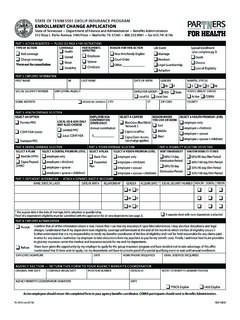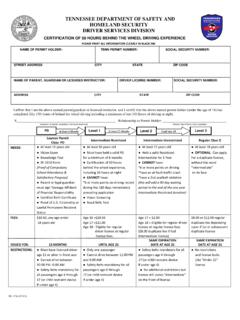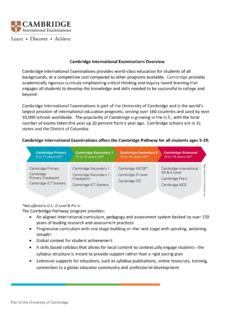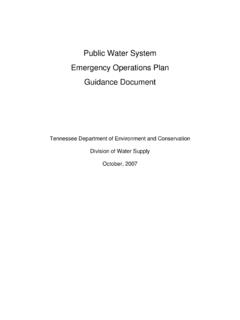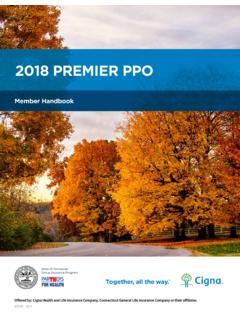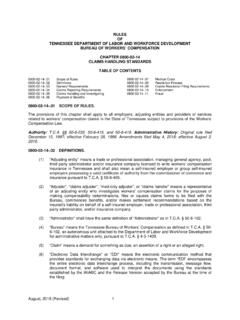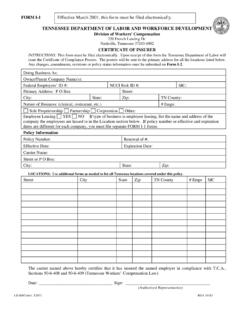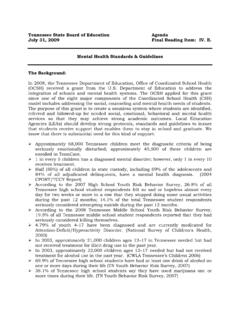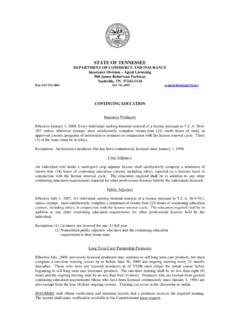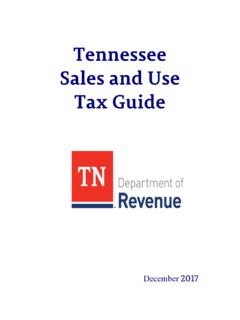Transcription of Tennessee English Language Arts Standards
1 1 2 Tennessee English Language Arts Standards General Introduction Businessman and philanthropist W. Clement Stone claimed that Definitiveness of purpose is the starting point of all achievement, and Standards provide that definition of purpose for each grade level. Standards should measure excellence, not just benchmark skills; therefore, the committee of Tennessee teachers, administrators, and higher education faculty developed a set of learning outcomes that embraces an overall expectation of 21st century literacy skills necessary to succeed in post-secondary and workforce arenas. Thus, critical and divergent thinking, problem solving, active listening, recognition of patterns and anomalies, and evaluation and questioning of source material are essential skills in this document.
2 Furthermore, these expectations reinforce the three ELA instructional shifts: regular practice with complex text and its academic vocabulary; reading and writing grounded in evidence from literary and informational text; and building knowledge through content rich literary and informational text. Standards Design The keystone is our ultimate goal students who are post-secondary and workforce-ready. The term keystone offers the relevant descriptive metaphor: in masonry, the keystone is the central stone at the summit of an arch, which holds the other pieces in place. While not mentioned directly in the Standards , the students as keystone remind all who implement the Standards to keep the students as the focus.
3 The keystone encourages all stakeholders to embrace and celebrate the diversity of young and adolescent learners and to employ evidence-proven, responsive, individualized implementation. Forming the foundation for post-secondary and workforce readiness are the cornerstone Standards (previously anchor Standards ). These Standards are foundational to the ELA skills and progression of skills that ensure all students meet post-secondary and workforce expectations. The term cornerstone offers another relevant descriptive metaphor: in ancient masonry, the cornerstone was the principal stone placed at the corner of an edifice.
4 As such, it was usually one of the largest, the most solid, and the most carefully constructed of any in the edifice. Integrate means to render something whole. Continuing the masonry metaphor, the Standards graphic communicates how the individual strands are built as compact units, but only when all of the Standards are fused together do we have a strong structure. When crafting the English Language Arts Standards , the committee focused on the integrated nature of the skills in the discipline and the progression of the skills through the grade levels. Through presenting the Standards in a vertical chart by standard rather than with each grade separately, the document emphasizes how the skills for reading, writing, speaking and listening, and Language spiral through all of the grade levels, leading to post-secondary and workforce readiness.
5 Linking Standards signal that planning for instruction needs to begin with a high quality text and that planning decisions with the Standards center on the selection(s). The exception to this thinking is the K-2 foundational skills. Important to understanding the progression is the role of each grade band within them. In grades K-5, the Standards signal the importance of laying a solid foundation for reading and writing. The middle grades, 6-8, solidify the foundation while increasing the complexity of text selection and tasks. Finally, grades 9-12 focus on sophistication and style. When learning the Standards for one grade level, readers must read the Standards in the previous and subsequent grades and understand 3 how that immediate grade fits into the students overall development.
6 Additionally, the Standards are a progression, and teachers will need to assess student understanding of and build on the previous years' Standards as they implement the Standards for their current grade. 4 The committee of Tennessee teachers, administrators, and higher education faculty who wrote the Standards maintained an intentional focus on the Language of the five strands. Following the mantra of read about it, talk about it, write about it the committee approached reading and writing as reciprocal skills; therefore, the role of texts and routine writing permeates all of the Standards .
7 Students should read high quality texts, discuss their interpretation and analysis, and write about their learning. When working with the writing and speaking and listening Standards , students should engage in reading and research practices as well as focus on the craft and correctness of their Language . With regard to the technology integration, to the extent possible, the committee left the Standards open to the ever-changing environment. The goal of the integration is to ensure that students are prepared for the technology demands of the post-secondary and workforce needs of Tennessee high school graduates; therefore, the focus is not on specific types of technology but the students ability to use the technology of their era.
8 Because the metaphor focuses on building skills from a strong foundation to support the keystone, the rest of the document follows that same line of thinking. Foundational Literacy Standards are the first section to follow the introduction. Following the Foundational Literacy Standards are the strands that lead to literacy competence: Language , Reading, Speaking and Listening, and Writing. Note on Coding The Standards are coded with the grade level, title of the strand, the category within the strand, and the number within the strand. In a few cases, a letter might also be used to delineate subsections.
9 Example: K is the grade level. Foundational Literacy (FL) is the strand. Print Concepts (PC) is the category. 1 is the number of the standard within the strand. Foundational K-5 Literacy Standards Literacy is a multi-faceted, complex relationship of interrelated skills. The ultimate goal of literacy instruction is for students to become proficient readers and writers. Before proficiency can be achieved, children must adequately develop the essential foundational skills during the early grades. The foundational literacy Standards for Tennessee students are a progression beginning with foundational skills to the sophisticated application of oral and written Language .
10 These Standards include: print concepts, phonological awareness, phonics and word recognition, word and sentence composition, and fluency. Foundational literacy skills must be nurtured and developed from an early age. Acquisition of Language -related skills begins with exposure to linguistic awareness games, songs, nursery rhymes, and rhythmic activities (NAEYC, 1998). The sounds and cadences serve as the groundwork for phonemic awareness (a child s ability to hear, manipulate, and identify small units of speech, including sounds, words, and syllables). Phonemic awareness is a significant predictor of reading 5 success (Suggate, 2014).
